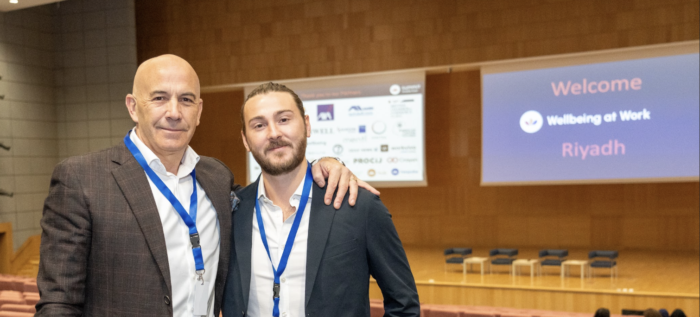Insights from Jamie Blower, Senior Manager, Corporate Wellness – Red Sea Global

At the recent Wellbeing at Work Summit Middle East in Riyadh, Jamie Blower, Senior Manager of Corporate Wellness at Red Sea Global, delivered an engaging session on how organisations can harness data to shape effective wellbeing strategies. Drawing on his extensive experience as a physiologist and his work implementing health and wellbeing initiatives at companies such as Siemens and Transport for London, Jamie shared valuable insights into the power of data-driven decision-making in corporate wellness.
The Power of Data in Wellbeing Strategies
Jamie opened his session by highlighting the fundamental principle that underpins his approach: “What can be measured, can be managed.” Data, when used effectively, provides an evidence-based foundation for wellbeing initiatives, ensuring that interventions meet the actual health needs of employees rather than relying on assumptions or generic solutions.
He emphasised that gathering health data from multiple sources is crucial for developing a comprehensive wellbeing strategy. This includes employee health assessments, absenteeism records, engagement surveys, and even wearable technology data. The key is to analyse and interpret this information to identify trends and target specific areas that require intervention.
Stakeholder Engagement: A Critical Factor for Success
A key takeaway from Jamie’s talk was the importance of engaging the right stakeholders in the wellbeing strategy. This includes not only HR and senior leadership but also employees themselves. Ensuring that initiatives align with employees’ actual health needs requires active involvement and feedback loops. If employees do not see the relevance or understand the benefits of wellbeing programmes, participation rates and effectiveness will suffer.
Jamie stressed the need for clear and consistent communication. Employees must be aware of the initiatives available to them and how these programmes can benefit their overall wellbeing. This means using accessible language, multiple communication channels, and, where possible, personalised messaging.
Using Power BI and Analytics to Drive Impact
One of the practical tools Jamie discussed was Power BI, a business analytics platform that helps organisations visualise and interpret data effectively. He shared how Red Sea Global leverages Power BI to track the impact of wellbeing interventions, ensuring that initiatives are not only evidence-based at the outset but are continuously monitored and adjusted as needed.
By analysing trends in real-time, businesses can quickly identify which programmes are working and which need refinement. For example, if a mental health support initiative shows low engagement, further investigation might reveal a lack of awareness or a need for adjustments in delivery methods.
Bespoke Interventions with Measurable Outcomes
Jamie provided examples of bespoke wellbeing interventions that Red Sea Global has implemented, demonstrating how organisations can quantify the impact of their strategies. From targeted physical health programmes to mental wellness initiatives, he illustrated how organisations can tailor their approach based on data insights.
The ability to measure return on investment (ROI) is a critical aspect of data-led wellbeing strategies. Jamie advised that organisations should not only track participation rates but also assess changes in key health metrics, productivity levels, and overall employee engagement. By linking wellbeing efforts to business outcomes, it becomes easier to secure ongoing support and investment from senior leadership.
Key Takeaways for Organisations
To conclude his session, Jamie summarised the essential steps for developing a data-driven wellbeing strategy:
- Collect and use health data: Gather and analyse all available health data to inform your wellbeing initiatives. This could include employee feedback, occupational health reports, and absenteeism statistics.
- Engage stakeholders: Ensure that leadership, HR teams, and employees are all involved in shaping and supporting wellbeing programmes.
- Communicate effectively: Make sure employees are aware of the initiatives available to them and understand how to access support.
- Leverage analytics tools: Use platforms like Power BI to track and measure the effectiveness of interventions in real time.
- Measure ROI: Continuously monitor the impact of initiatives, quantifying improvements in employee wellbeing and business performance.
By following these principles, organisations can ensure their wellbeing strategies have a meaningful and lasting impact, not only improving employee health but also contributing to overall business success. Jamie’s session served as a compelling reminder that data, when used effectively, is a powerful tool in creating healthier, more engaged workplaces.
Watch the Full Session
For those who attended the session, the full video of Jamie’s talk is available for a limited time via the Wellbeing At Work Hub platform. Fully paid Hub members can access these videos on demand from our global video library.
Need Help with Your Wellbeing Strategy?
If you’re looking for expert support in developing or refining your organisation’s wellbeing strategy, check out Wellbeing At Work’s Bespoke consultancy service. Whether you need help identifying gaps, designing data-led solutions, or implementing effective wellbeing programmes, our team is here to assist you



